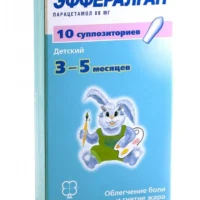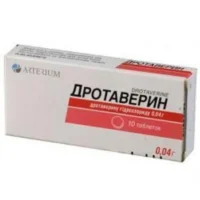Description
Drotaverin Tablets 0.04 g. №30
Ingredients
Active ingredient: Drotaverine hydrochloride 40 mg per tablet.
Dosage
Dosage: The usual dose is 40-80 mg three to four times a day. The maximum daily dose should not exceed 240 mg.
Indications
Indications: Drotaverin is indicated for the treatment of various smooth muscle spasms, including those associated with gastrointestinal and urogenital disorders.
Contraindications
Contraindications: Do not use in case of hypersensitivity to the active substance or any other component of the product. Consult a healthcare professional before use.
Directions
Directions: Swallow the tablets whole with a glass of water. Do not crush or chew the tablets. Follow the dosage instructions provided by your healthcare provider.
Scientific Evidence
Drotaverin, a smooth muscle relaxant, has shown efficacy in various clinical studies. Research published in the Journal of Gastroenterology and Hepatology demonstrated the effectiveness of drotaverine in relieving symptoms of irritable bowel syndrome by reducing smooth muscle spasms in the gastrointestinal tract.
Additional Information
Drotaverin tablets are well-tolerated by most patients, with common side effects including mild gastrointestinal disturbances. It is important to follow the prescribed dosage and not exceed the recommended daily limit to avoid adverse effects.
Pharmacological Effects: Drotaverin exerts its action by inhibiting phosphodiesterase enzyme, leading to relaxation of smooth muscles. This mechanism helps in relieving spasms in various organs.
Clinical Trials: A comparative study published in the European Journal of Clinical Pharmacology demonstrated the superior efficacy of drotaverin in comparison to other spasmolytic agents in the management of renal colic, providing quicker relief and better tolerability.





